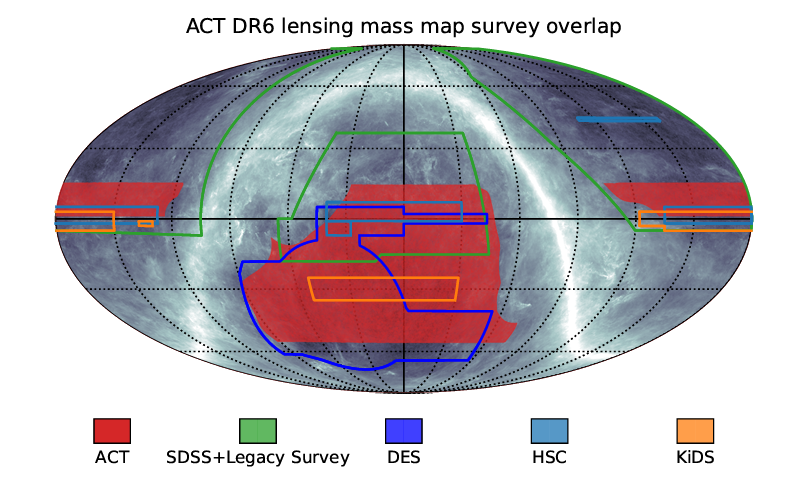Zooming In: Gravitational Lensing Maps Dark Matter Across the Sky
A newly published image reveals the most detailed map of dark matter across almost
25% of the sky! The Atacama Cosmology Telescope (ACT) collaboration, co-lead by our
own Dr. Neelima Sehgal, uses gravitational lensing -- a technique measuring the bending
of light around a heavy object -- to make the map.

A figure from the published paper, showing the dark matter map as it would look on the sky above Earth.
"This ACT result showcases the precision that can be obtained with measurements of
the gravitational lensing of the microwave background, as well as the promise of future
more sensitive CMB experiments in terms of furthering our understanding of the physics
of the Universe."
- Dr. Sehgal
Dark matter makes up more than 80% of the matter content of the universe, yet is still
poorly understood. These new results might offer insight into new ways to further
study dark matter and unlock its mysteries.
 A figure from the published paper, showing the area covered in the survey (red) along with areas covered by other ongoing
galaxy surveys. The survey colors are superimposed on a dust map image from the Planck
Collaboration et al. 2016b.
A figure from the published paper, showing the area covered in the survey (red) along with areas covered by other ongoing
galaxy surveys. The survey colors are superimposed on a dust map image from the Planck
Collaboration et al. 2016b.
The ACT used gravitational lensing measurements of the cosmic microwave background (CMB) radiation -- light leftover from close to the very beginning of the universe -- to construct the highly detailed map. The survey used four whole years of data gathered by the telescope, and covers approximately 23% of the sky.
A report published by the university about the new image may be read here. The paper containing the image may currently be read here.
